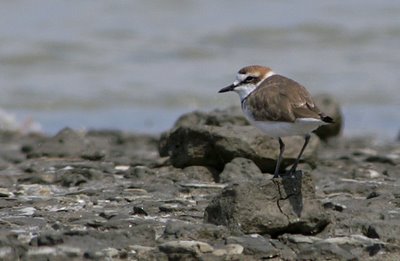
A male Kentish sitting on his personal roosting spot!
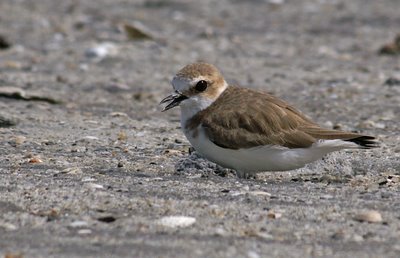
Man, but it was hot out there! This female Kentish pants to cool off

Eventually the birds roosted on the construction site. Here's a male coming into breeding dress.

And a female - what BIG eyes you've got!
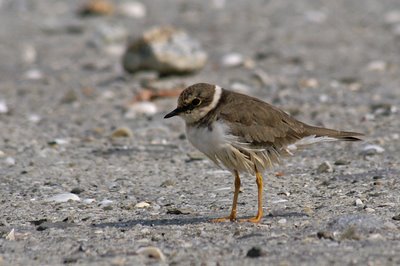
The foreshore is covered in rubbish and chemical pollution. Sadly, this Little Ringed Plover has picked up some of the gunk on its belly feathers, and the likely outcome will be fairly swift death, either through ingesting the stuff in an attempt to clean itself, or through loss of body heat due to the feather damage.

It was nice to see Greater Sand Plovers outnumbering Lessers for a change today - it's not often that happens. There's just one Lesser Sand in this picture - it's the third plover from the left (click on the picture to enlarge it).
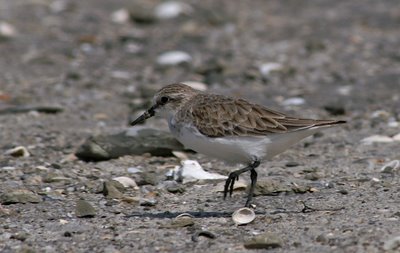
Here's a classic Red-necked Stint (see the discussion of the difference bewteen Red-necekd and Little in yesterday's post).
Here's today's count:
Whimbrel 3
Kentish Plover 22
Little Ringed Plover 4
Greater Sand Plover 20
Lesser Sand Plover 10
Pacific Golden Plover 300
Redshank 150
Greenshank 30
Marsh Sandpiper 4
Curlew Sandpiper 1
Common Sandpiper 10
Red-necked Stint 250
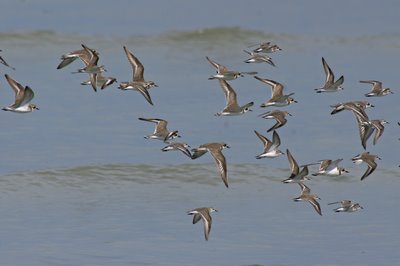
One of my very few really sharp flight shots! A flock of Sand Plovers and Red-necked Stints. The extreme left hand bird is a Lesser Sand Plover; all the others are Greater. Not much difference in foot projection beyond the tail evident on this picture!
No comments:
Post a Comment